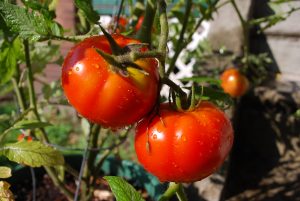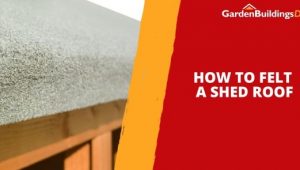Jump to:
Tomatoes are among the high-demand crops to grow at home. Cultivating them in your garden greenhouse, however, requires optimal conditions for quality and better yields. This guide gives you some pointers to help you get started, especially if you’re doing this for the first time.
Basics of Growing Tomatoes

Tomatoes don’t take much effort to grow, but they need regular tending, like watering and feeding. They’re also tender perennials, meaning they won’t handle frost or cold temperatures well, so they’ll need protection. For that reason, you will want to grow them in a greenhouse. But this bit of care is well worth it, especially when you pick your home-grown tomatoes in summer at their sweetest, juiciest best.
There are loads of British tomato varieties to choose from, which is a great perk of growing your own—you get far more choice than in the supermarket. This includes the classic (your familiar favourite), small and sweet cherry tomatoes, cocktail tomatoes, plums and baby plums with their oval shapes, and beef tomatoes, a.k.a. the big and meaty ones.
If you’ve decided what kind of tomatoes you want to grow (though feel free to experiment with different types!), proceed to the next step.
Grow Greenhouse Tomatoes in Two Ways
There are two ways to grow your tomatoes in a greenhouse: cordon and bush—according to the variety.
Cordon (indeterminate) tomatoes grow tall and need sturdy supports. They don’t take up much ground space but need regular care, including watering, feeding, tying to supports, and removing side shoots.
Bush (determinate) tomatoes stay compact and are for smaller spaces. Trailing types work well in window boxes and hanging baskets. They’re the easiest to grow, requiring little maintenance beyond watering and feeding, though heavy stems may need support, like sticks to hold them up.
Most popular UK tomato varieties are cordon types, but some, like Roma plum tomatoes, are bush.
Tip: Always check the seed packet or label to make sure it fits your space before buying.
Sow Tomatoes (Indoor to Greenhouse)
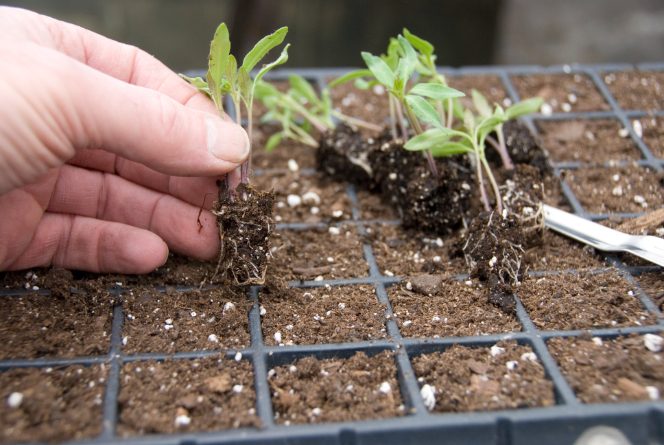
(Image Credit: Wikimedia Commons)
Sow tomato seeds ½ inch deep and 1 inch apart in pots. They need a soil temperature of 21-27°C (70-80°F) to germinate and grow best at 18°C (65°F) as seedlings. Vining varieties should be spaced 90-120 cm apart. For support, start with BBQ sticks, then switch to stakes, cages, or a trellis to keep the plants growing off the ground.
Keep the pots in a bright spot, on a heat mat, or under grow lights if natural light is limited. Tomatoes need at least 8 hours of sunlight per day. Seeds should germinate within 5-7 days if conditions are right.
After two weeks, they’ll be ready to move to the greenhouse. Be careful not to disturb the roots when transplanting to keep them growing strong. Water the seedlings regularly and continue throughout the growth process until harvest.
You can start harvesting when the tomatoes are full, glossy, and beginning to change colour. To improve quality, consider limiting each plant to six fruit trusses (clusters).
Tips: Pots, troughs, or greenhouse borders all work for tomatoes. Containers need to be deep enough with plenty of soil. If using pots, make sure they have drainage holes to prevent waterlogging.
Check out this guide next for more: 5 Best Plants To Grow In Your Greenhouse
Greenhouse Tomatoes Need the Right Temperature
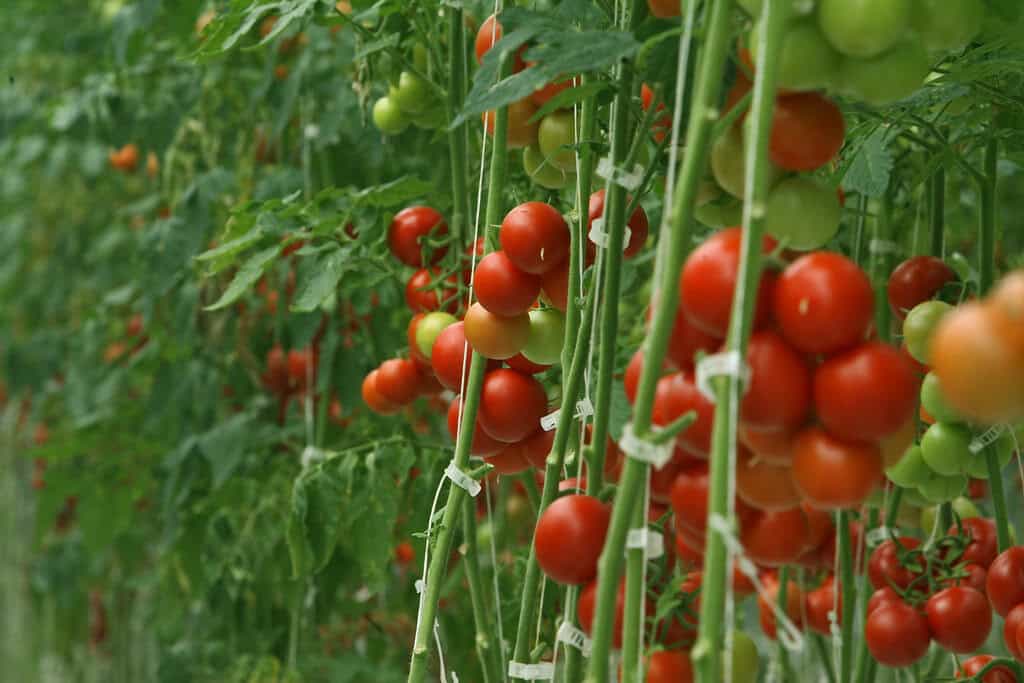
64°F to 80°F (18°C to 27°C) is ideal during the day—this range is also best for pollination. Tomatoes can handle lower temperatures, between 54°F and 64°F (12°C and 18°C) at night. For seed germination, 70°F to 85°F (21°C to 29°C) is best. These conditions must be maintained for the plants to develop fast and produce high-quality fruit.
Keep It Balanced with Humidity Levels
Tomatoes like consistent humidity, between 60% and 70%. Too high, and you risk disease. Too low, and the plants can dry out or struggle with pollination, as dry air affects how well pollen moves.
If the greenhouse temperature goes up, humidity can increase. And when it drops at night, moisture in the warm air can condense on leaves, fruit, or greenhouse surfaces. Excess moisture can lead to fungal diseases such as blight.
In short, high temp + no ventilation (more on this later) = high humidity; low temp = risk of condensation. Balance is key.
Maintain and Control Temperature and Humidity
There are methods you can use to improve your greenhouse growing conditions, including:
Greenhouse ventilation
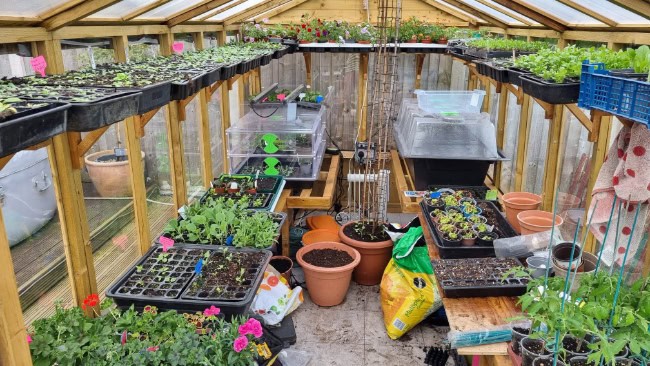
Good air movement keeps temperature, humidity, and fresh circulation in check. A wooden greenhouse with built-in roof vents is a great solution. Simply open them to let the air flow and regulate temperature.
If roof vents aren’t an option, try these alternatives:
- Open the door and side panels: This helps release warm, stale air and lets in cooler, fresher air during the day.
- Use louvre windows: Tilt them to control airflow. They’re easy to adjust and don’t require extra installation.
- Install a fan (optional): If natural airflow isn’t enough, a plug-in fan can help. For smaller spaces, a 12–16-inch fan should suffice. Mount it opposite the door or low to the ground for better circulation.
- Add an exhaust system (optional): Electric fans fitted at one end of the greenhouse can pull warm air out. These are often used in larger setups but are available in compact sizes for smaller spaces.
Product recommendation: The BillyOh 4000 Lincoln Wooden Polycarbonate Greenhouse comes with roof vents. Depending on the size you choose, you can place the vents where they work best for your setup.
Heating
Natural sunlight will suffice to keep the greenhouse warm enough for tomatoes. But in colder months or cooler regions where the temperature is consistently below 10°C, extra heating, such as electric greenhouse heaters, can help. Even heat mats under seedlings can get your crop off to a good start.
Tips: Place the heater near the vents or fans so the warm air spreads evenly rather than creating hot spots. If you want a more practical approach, here’s how to heat your greenhouse for less.
Shading
Feel free to leave the heating off if your region is in a warmer climate. Instead, it might need cooling to reach the ideal range—cue shading.
Use shade curtains during high-light and high-temperature months. These are usually designed for 30% to 50% light reduction. Greenhouse blinds are also great, with a shade value of 60%.
Alternatively, spray whitewash over the greenhouse roof. This will act as the ‘curtain’ and can be washed off when fall weather approaches.
Insulation
Insulation, as opposed to power heaters, is worth considering for saving energy while preventing heat loss. It keeps the warmth inside longer, so you don’t need to keep the heater on as much.
Insulate using bubble wrap, thermal screens, or heavy-duty plastic sheeting. Bubble wrap is easy to apply and traps air. Thermal screens are fabric-like materials that reflect heat inside while letting some light through. Plastic sheeting works as a simple barrier to block drafts and retain warmth.
Sealing any gaps also stops heat from escaping. Use weatherproof tape or silicone sealant around doors, windows, and joints. Cover all parts where heat could escape for best results – don’t leave gaps between insulation panels.
Dehumidifiers or absorbers
A dehumidifier can pull moisture out of the air, which can be helpful if the air is too damp. It’s also handy to have around, especially when ventilation might not be enough.
Connect it to a power source and set the recommended humidity level. Check and empty the water collection tray regularly, or set up a drain if possible.
Absorbers, in contrast, can be in the form of silica gel or rock salts. These materials don’t need power like dehumidifiers to soak up moisture. Replace or refresh as per the product instructions, such as when they no longer feel dry.
Themometers & hygometers
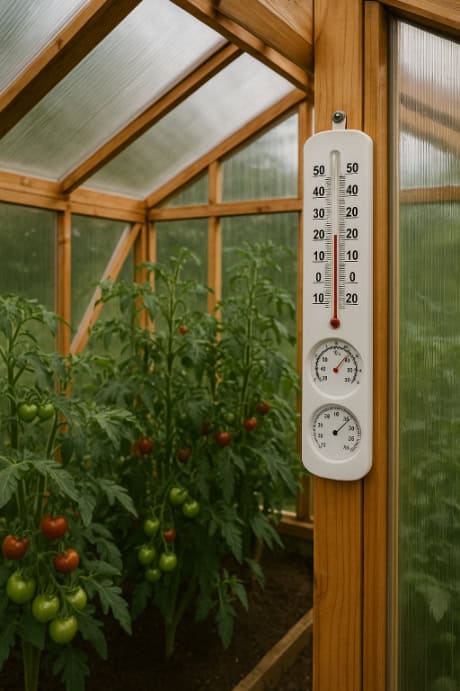
A thermometer tells you the temperature, while a hygrometer measures humidity levels. This gives you control and an idea of whether the greenhouse is getting too hot or cold, or if the air is too dry or damp.
If the thermometer is creeping above 27°C, open vents or add shading to cool things down. If the hygrometer exceeds 70% humidity, use a dehumidifier or place absorbers around the greenhouse.
Both tools save you from guessing!
Use Soil Suitable for Growing Greenhouse Tomatoes
The soil should be well drained, rich in organic matter, and have a pH between 6.0 and 6.8. To DIY, mix equal parts of peat moss, perlite or vermiculite, and compost.
Test the soil pH and adjust it as necessary—add lime to raise the level or sulphur to lower it. Balanced soil will give your tomatoes the necessary nutrients for a bountiful harvest.
Schedule Fertilising
Like with soil, fertilising must be balanced. Too much, and you risk leafy growth with fewer fruits. If there is too little, the plants might not grow properly or produce a good crop.
Ideally, when transplanting, go for 10-10-10 (nitrogen, phosphorus, potassium). Once the plants begin to flower, switch to one with a lower mix to support fruit development. Apply fertiliser every 2 to 3 weeks, but always follow the instructions on the label.
Note: Yellowing leaves, slow growth, or weak stems can be signs that nutrients are lacking. Adjust as needed to keep everything in check.
Keep the Tomatoes Off the Ground
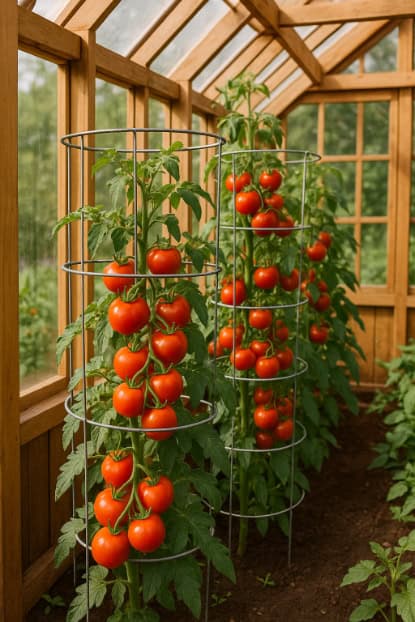
You can do this by using supports like trellises, pegs, cages, or string lines. A trellis system will train your tomato plants to grow along the horizontal wires.
Or, drive stakes into the ground next to each plant and tie the main stem to the stake. Placing a cage around your tomatoes can also provide support for branches.
These methods keep them upright and stop the fruit from resting on the soil, where it can attract pests. They also make watering, pruning, and harvesting more manageable.
Control Pests and Diseases
Speaking of pests, you’ll want your tomato crops free from them, including diseases. Monitor signs of infection and treat as needed with organic pesticides. For extra preventive measures, introduce beneficial insects, such as ladybirds.
Fun fact: A single lady beetle can eat as many as 5,000 aphids in its lifetime.
When it comes to diseases, it starts with good sanitation. This means removing dead leaves and debris regularly.
Crop rotation also works. It’s a growing technique where you avoid planting tomatoes in the same place every year. This helps with preventing the accumulation of soil-borne diseases.
Round-up
Growing greenhouse tomatoes takes keeping the right conditions in check. Managing temperature and humidity, using the right soil, and feeding your plants are a great starting point. Support your plants to keep the fruit off the ground, and watch out for pests and diseases. With these practices, you can expect healthier tomatoes and better yields.
